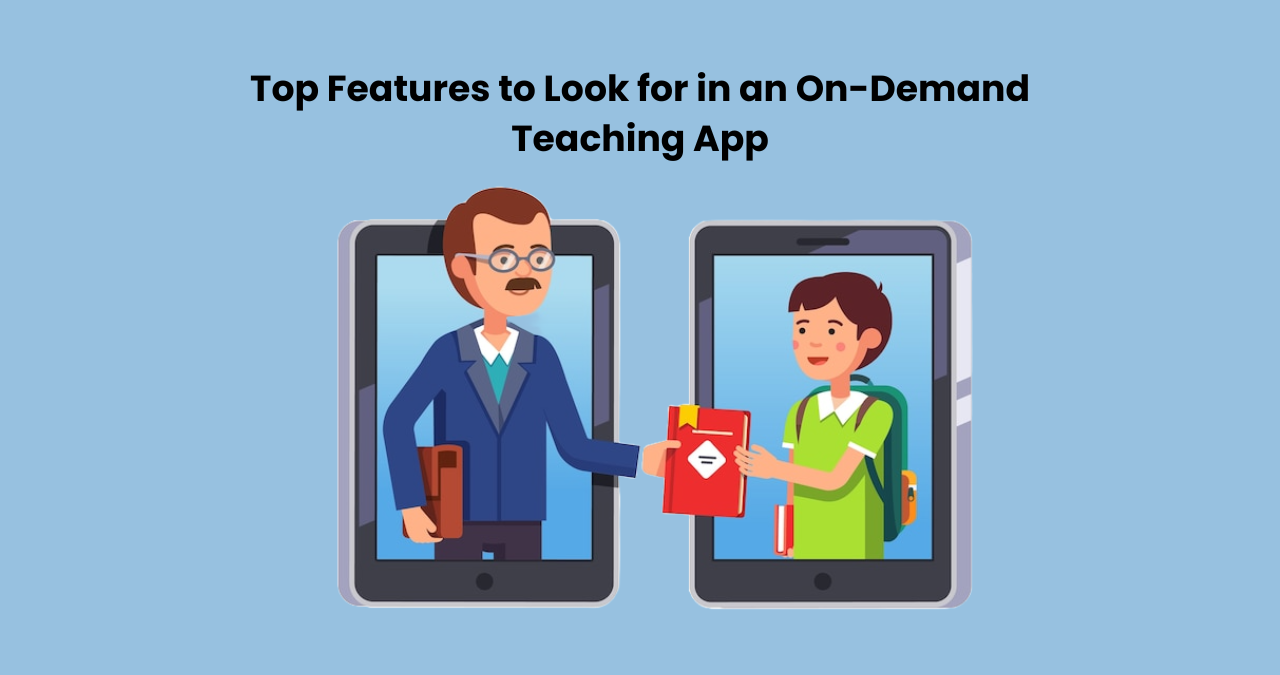In the last few years, online education has gained massive popularity. Whether it’s school students, college learners, or working professionals, many now prefer learning through digital platforms. On-demand teaching apps are playing a big part in this change. These apps make it easier for students to learn anytime, anywhere, and at their own pace. At the same time, teachers and tutors also benefit by reaching a larger audience.
If you are planning to build an on-demand teaching app or want to improve an existing one, it’s important to focus on features that truly add value. A good teaching app should be simple to use, interactive, and helpful for both teachers and learners. In this guide, we’ll explore the top features you should look for in an on-demand teaching app and why they matter.
Why On-Demand Teaching Apps Are Gaining Popularity
Flexible Learning
One of the biggest reasons people prefer on-demand education is flexibility. Students no longer have to stick to a fixed schedule. They can learn during their free time, after work, or even late at night. These apps let users pause, rewind, and rewatch content at their own pace.
Wide Access to Knowledge
With an on-demand teaching app, learners from different places and backgrounds can access quality education. They are no longer limited by geography. Whether it’s a coding course, language class, or school subject, students can connect with experts from across the world.
Affordable and Scalable
Unlike traditional coaching or tuition centers, teaching apps are more affordable for users and scalable for businesses. With low costs and easy access, they are perfect for both individual learners and large educational institutions.
Must-Have Features in an On-Demand Teaching App
Easy Registration and Login
The app should allow users to register easily using their email, phone number, or social media accounts. This helps users start learning quickly without unnecessary steps. Having a smooth login process also ensures a good first impression.
User-Friendly Dashboard
A simple dashboard helps both students and teachers navigate the app easily. For students, it should show enrolled courses, progress, upcoming live classes, and quizzes. For teachers, it should display upcoming classes, earnings, student feedback, and course performance.
Course Browsing and Filters
Users should be able to explore different courses using filters like subject, difficulty level, price, or ratings. A search option also helps students find what they need quickly. This feature improves user experience and saves time.
Live Classes and Video Playback
Live teaching sessions add a human touch to online learning. Students can interact with teachers in real time, ask questions, and participate in discussions. At the same time, recorded video lessons allow learners to watch classes when it suits them. A mix of both live and recorded sessions is ideal.
In-App Chat and Communication
Communication is key in education. A built-in chat feature allows students to ask questions and get help from teachers. Teachers can also provide one-on-one feedback or support when needed. This feature builds a strong connection between users.
Interactive Whiteboard and Screen Sharing
During live classes, an interactive whiteboard lets teachers explain complex topics more clearly. Features like drawing, highlighting, or writing help create a classroom-like experience. Screen sharing is useful when teaching software, design, or any visual subject.
Quizzes and Assessments
To help learners test their knowledge, the app should include quizzes and assignments. Automatic grading saves time and shows results immediately. Teachers should also be able to create custom tests for students.
Progress Tracking
Students should be able to track their progress in each course. This includes lessons completed, quiz scores, and badges earned. It motivates learners to stay consistent. Teachers can also use progress data to help struggling students.
Secure Payments and Subscriptions
If your app offers paid courses, it must have a safe and easy payment system. Offer multiple options like credit cards, digital wallets, and net banking. The app should also support different pricing models like one-time payments, subscriptions, or course bundles.
Ratings and Reviews
Allow users to leave feedback for courses and teachers. Honest reviews help other users choose the right course. At the same time, teachers can use this feedback to improve their content and teaching style.
Notifications and Reminders
Push notifications help users stay updated about upcoming classes, new course launches, discounts, or missed lessons. These gentle reminders increase app engagement and keep users active.
Multilingual Support
To reach a wider audience, it’s good to offer content in multiple languages. This helps learners from different regions feel comfortable and better understand the content.
Admin Panel
An easy-to-use admin panel lets the app owner manage users, payments, courses, and feedback. It’s also useful for monitoring app performance and fixing issues quickly.
Read More: A Comprehensive Guide to Developing an On-Demand Tutors App
Advanced Features for a Better Experience
AI-Based Recommendations
AI can help users find the best courses based on their learning history, interests, and search behavior. Personalized suggestions improve the user journey and keep learners coming back.
Gamification
Adding game-like features such as badges, points, and leaderboards makes learning fun and engaging. It motivates users to complete lessons and participate actively.
Offline Access
Allow users to download course content and access it without the internet. This is helpful for students with poor connectivity and makes learning more flexible.
Analytics for Teachers
Give teachers access to reports showing how many students joined, completed the course, or dropped out. These insights help improve the quality of teaching and content.
FAQs
How long does it take to build an on-demand teaching app?
Depending on features and design, it can take anywhere from 3 to 6 months. Complex apps with more features might take longer.
Can I update or add new features later?
Yes, most apps are built to be scalable. You can always add new features or update existing ones as your app grows.
Do I need a separate app for students and teachers?
It’s common to have separate panels or dashboards within one app. However, some prefer two different apps for better functionality. It depends on your business model and budget.
Is live video a must-have feature?
Live classes are not mandatory, but they do improve the learning experience. If you want to offer real-time interaction, live video is a great feature to include.
How can I monetize my teaching app?
You can earn through course fees, subscriptions, in-app ads, certification charges, or even premium memberships. Choose a model that works best for your audience.

Conclusion
An on-demand teaching app has the power to change how we learn and teach. With the right features, you can offer a smooth, engaging, and flexible learning experience to users around the world. Whether you’re targeting school students, professionals, or hobby learners, your app should focus on ease of use, content quality, and effective communication. Make sure to choose a trusted development team that understands the needs of modern education and can build a solid product for you. If you’re looking to create an app that’s both powerful and scalable, many features discussed above can also be found in advanced platforms like a gojek clone app, making it a useful reference for multi-service solutions.






